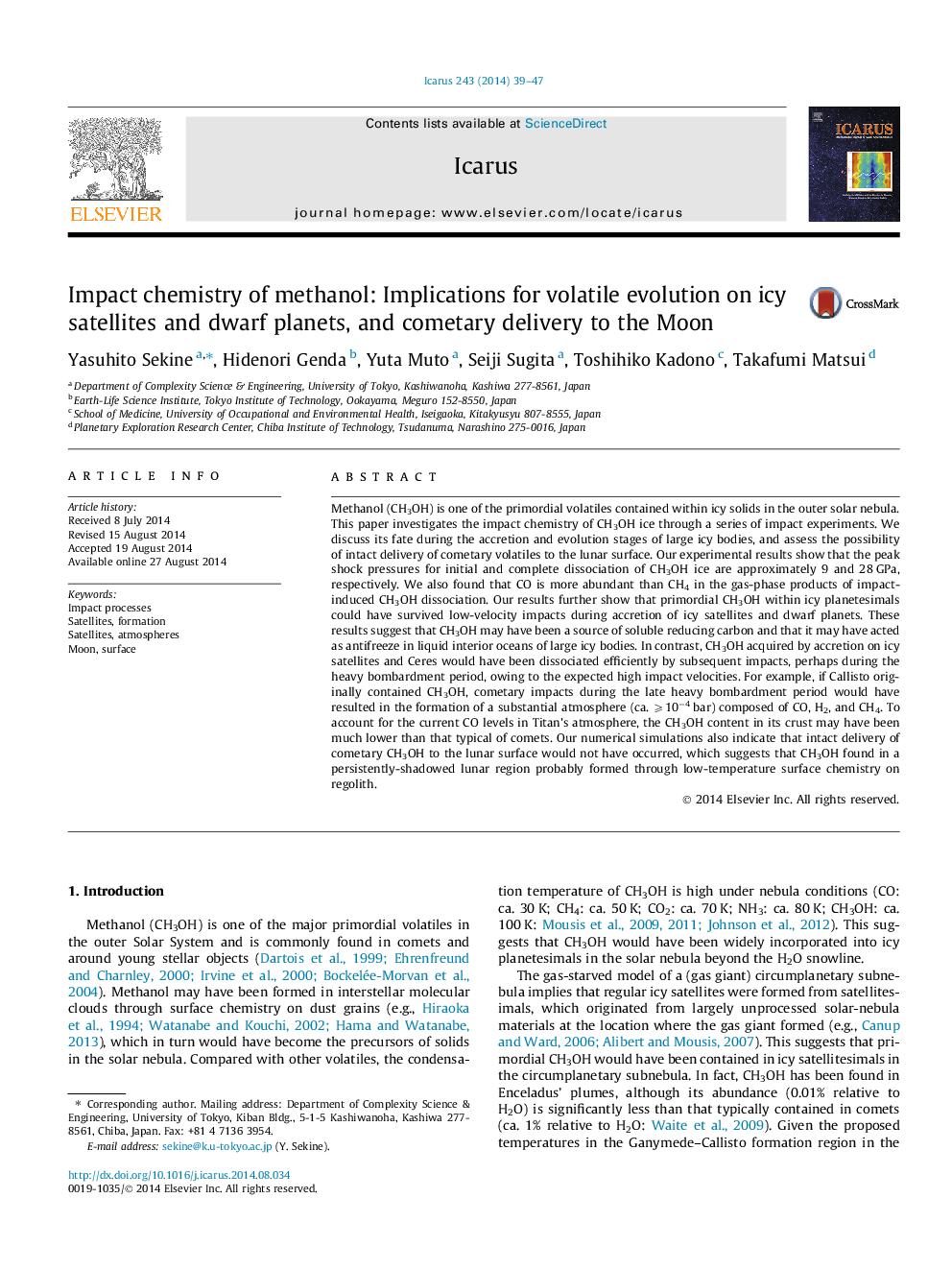| کد مقاله | کد نشریه | سال انتشار | مقاله انگلیسی | نسخه تمام متن |
|---|---|---|---|---|
| 1773081 | 1523547 | 2014 | 9 صفحه PDF | دانلود رایگان |
• Impact-induced dissociation of methanol begins at peak shock pressure of 9 GPa.
• Complete dissociation of methanol by impacts occurs at peak shock pressure of 28 GPa.
• Primordial methanol survives accretion events on icy satellites and dwarf planets.
• Post-accretion cometary impacts dissociate methanol near icy satellites’ surfaces.
• Intact delivery of cometary methanol to the lunar surface would not have occurred.
Methanol (CH3OH) is one of the primordial volatiles contained within icy solids in the outer solar nebula. This paper investigates the impact chemistry of CH3OH ice through a series of impact experiments. We discuss its fate during the accretion and evolution stages of large icy bodies, and assess the possibility of intact delivery of cometary volatiles to the lunar surface. Our experimental results show that the peak shock pressures for initial and complete dissociation of CH3OH ice are approximately 9 and 28 GPa, respectively. We also found that CO is more abundant than CH4 in the gas-phase products of impact-induced CH3OH dissociation. Our results further show that primordial CH3OH within icy planetesimals could have survived low-velocity impacts during accretion of icy satellites and dwarf planets. These results suggest that CH3OH may have been a source of soluble reducing carbon and that it may have acted as antifreeze in liquid interior oceans of large icy bodies. In contrast, CH3OH acquired by accretion on icy satellites and Ceres would have been dissociated efficiently by subsequent impacts, perhaps during the heavy bombardment period, owing to the expected high impact velocities. For example, if Callisto originally contained CH3OH, cometary impacts during the late heavy bombardment period would have resulted in the formation of a substantial atmosphere (ca. ⩾10−4 bar) composed of CO, H2, and CH4. To account for the current CO levels in Titan’s atmosphere, the CH3OH content in its crust may have been much lower than that typical of comets. Our numerical simulations also indicate that intact delivery of cometary CH3OH to the lunar surface would not have occurred, which suggests that CH3OH found in a persistently-shadowed lunar region probably formed through low-temperature surface chemistry on regolith.
Journal: Icarus - Volume 243, 15 November 2014, Pages 39–47
